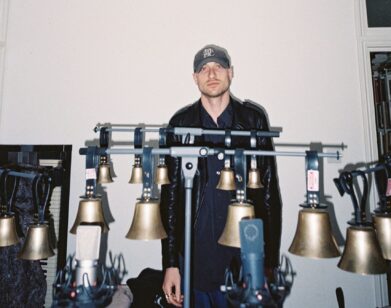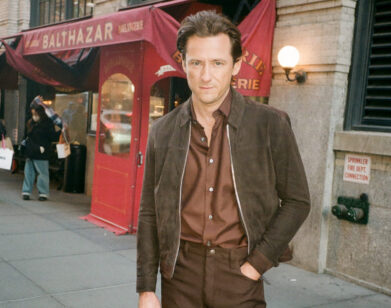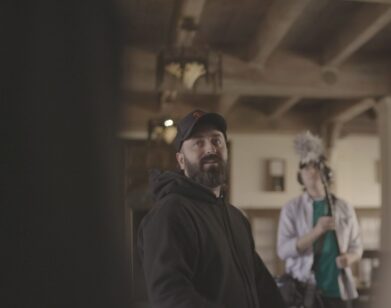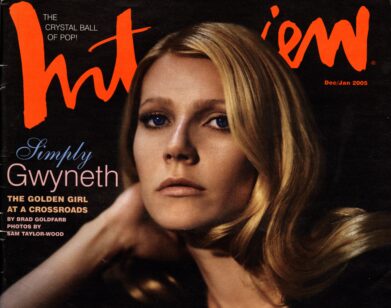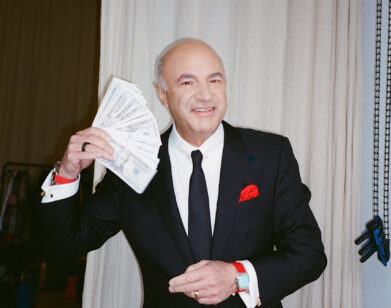Jerry Schatzberg’s Enduring Puzzle
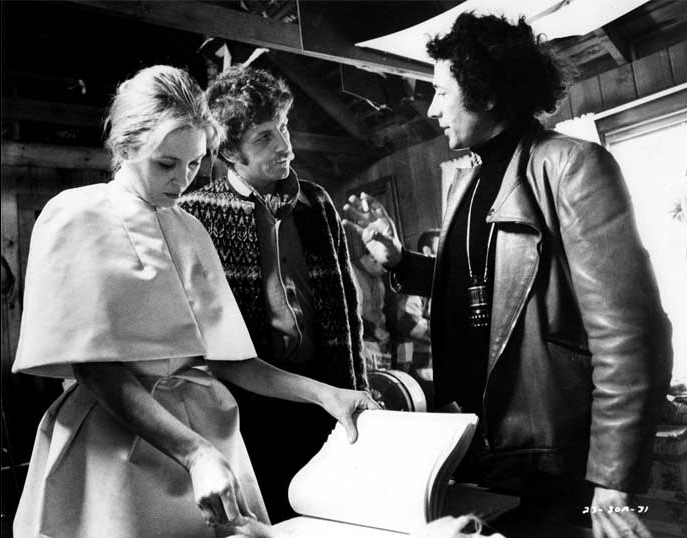
JERRY SCHATZBERG (RIGHT) WITH FAYE DUNAWAY AND BARRY PRIMUS ON THE SET OF PUZZLE OF A DOWNFALL CHILD. FILM STILL COURTESY OF FILM FORUM
“As beautiful as I can, but as real as I can. I look for the honesty in what I see.” Photographer and filmmaker Jerry Schatzberg’s breathtaking body of work observes the implicit relationship between intimacy and narrative. With both his models and his characters—including portraits of Bob Dylan, Fidel Castro, a sixteen-year-old, cigarette-puffing Catherine Deneuve, or Al Pacino and Kitty Winn as Bobby and Helen in The Panic in Needle Park—his preoccupation with story and private gestures builds meaning through subtle reciprocity. Even his more anonymous photographs—those of women wiggling into their shoes, or stopping mid-stroll near Gramercy Park, or capping the night at an early-morning fish market—tell stories.
In his first feature, Puzzle of a Downfall Child, which screens for one night only at Film Forum on December 6th, the model Lou Andreas Sand (Faye Dunaway) suffers a breakdown and retreats to an isolated beach house. Aaron, a photographer and former lover (Barry Primus), visits Lou and tape-records their conversation. Cleaved into parts that jump back and forth in time, the film, like Schatzberg’s photographs, arrives at Lou’s essence without encroaching on her character. We spoke with Jerry about Puzzle, a project he remembers fondly.
DURGA CHEW-BOSE: Hi, Jerry.
JERRY SCHATZBERG: Hi.
CHEW-BOSE: It’s been, what, forty years since you made Puzzle?
SCHATZBERG: Well, let’s see, ’69, so forty-two years. I don’t believe it!
CHEW-BOSE: What parts of the production do you remember really well?
SCHATZBERG: I’ve got a funny memory, because I really don’t remember films, I’m doing all these screenings for the Academy and I don’t remember the next day what I’ve seen… I mean if something’s really impressive, well then, of course! But yes, Puzzle was interesting. It was my first film. I don’t think I was a genius at making films at the time. Now I am. [LAUGHS] Everything was a struggle in some ways. I didn’t know the language of acting, but I did know visual, so I made sure I had a good cameraman.
CHEW-BOSE: As a photographer, were you tempted by the camera, to shoot certain scenes?
SCHATZBERG: Sometimes we had a to talk about the shot, argue about it a bit. Somebody might walk away a bit mad—usually not me, though, because the director usually has his way. [LAUGHS] But getting back to Puzzle. So Faye and I, you probably read up about me, so you know that at one time we were friends, we still are friends, but she was very difficult at times. And you have to deal with that, because with every film you have to give the actors their freedom be who they are and find their character. I always say that about Gene Hackman—who, we get along, he thinks we get along really well, but he’ll always say it on television, he never gets along with any directors he works with.
CHEW-BOSE: Except for you. He’s said he got along best with you.
SCHATZBERG: He said that, yes. He had just come back from doing a film with Nick Roeg and he was bitching and moaning and I said, “Come on Gene, you don’t get along with any directors!” And he said, “I get along with you!” And in Puzzle there’s a scene in the dressing room where Faye’s character has a list of photographers she won’t work with anymore…
CHEW-BOSE: I saw your name on that list!
SCHATZBERG: We had just had big fight, and so she actually put it on that list. And I left it on the list in the movie!
CHEW-BOSE: It’s pretty glaring—it’s in red and other names are in black.
SCHATZBERG: And there were times when I closed the set down because of her temperament, and I’ll give in to temperament, because I believe you have to treat the actors like they’re children sometimes. You have to love them, but you also have to say, “C’mon now, get on with it.” But we had a great time and it was great experience, because I met a lot of wonderful people in making it. It was about subject matter I knew a lot about, so I felt comfortable with this film.
CHEW-BOSE: Aaron’s character is loosely based on you, right?
SCHATZBERG: Loosely, yeah. As I always say, because even today people accuse me of having an affair with the model who it’s based on…
CHEW-BOSE: Anne St. Marie?
SCHATZBERG: Yeah, which was not true. She was a great friend of mine, and she was somebody that offered me work. You know, she would do things for me that she didn’t have to. She was always really nice. We became really good friends. You know, when she died, I went to the memorial service, and her daughter came up to me and said, “Eileen Ford said if I want to know about my father I should talk to you.” And I looked at her and said, “I’m not your father. I have an idea who might be.” And I did pursue that. And you know, she’ll probably be at the screening on Monday.
CHEW-BOSE: Were parts of the script transcribed from the recordings with Anne and then added to the script? In particular, there are a few lines I have in mind. One is, “I had the best time in my life being miserable,” and also, “I’ve always longed for living in a state of grace with someone.”
SCHATZBERG: That’s all Carol. I think most everything in that script is Carol. The first script was over three hundred pages. And she wouldn’t send it to me. I had to beg and cajole her. Finally she sent it, and I had to promise to destroy it after—which I didn’t do. I mean, she was brilliant, I really lucked out with that, because I went through a French writer, and he wrote a fairly good script. He had an ego that was very difficult to work with, and when I finished reading it, I said, “I think it’s quite good. But I’ll tell you what we have to change.” And he just couldn’t accept the fact that I had never directed a film, but that I was going to tell him how to change his script. And it went like that for a while before I realized it wasn’t going to work. The first script had some of what the film has, but it also had an abortion, which is where the title comes from. And that’s the only thing I kept from it, and that’s the only thing that Carol didn’t like.
CHEW-BOSE: I was curious about the title, actually.
SCHATZBERG: I think it’s an interesting title, and once somebody likes it they’ll remember it.
CHEW-BOSE: And your photographs, they had huge a influence on Puzzle. In that scene where all you see is her red nails covering her red lips…
SCHATZBERG: It’s all a part of what I knew in that world.
CHEW-BOSE: Your earlier films like Scarecrow, or The Panic in Needle Park, or Puzzle of a Downfall Child are centered on relationships between two people…
SCHATZBERG: I like telling stories about people, and I like in those early films, I like finding marginal people to tell stories about. I went away from it for a while, but I don’t always do that.
CHEW-BOSE: New York in Puzzle and The Panic, do you find there are any parts of the city that are still like that? That still look like that?
SCHATZBERG: When I go to places that have changed, I feel like it’s another part of New York that I hadn’t discovered before. My interpretation of New York is just how I see it—one of the projects I’m working on now is again going to be a New York film—and I’m thinking about other parts like Wall Street to shoot there too. I like the roofs over there, which I did a little bit of in Panic. Of course, you know, I grew up in the Bronx, and my mother grew up in Brooklyn, and my father was from the Lower East Side. I’ve never really explored Brooklyn, but I once shot a short film in DUMBO. It was for a film called Lumière and Company. They had forty directors do a fifty-two-second piece—that’s the amount of film the camera would take, original Lumière cameras. It was hard to do a narrative in fifty-two seconds.
CHEW-BOSE: It’s nearly impossible to find a copy of Puzzle. Why do you think it was far better received in Europe?
SCHATZBERG: It’s their sensibility. Americans have a certain idea of what films are and the French have a much deeper sense of cinema. The cinémathèque is like a temple for them. And the people who write about it are really intellectuals, and of course The New Wave—the freedom, the honesty—was started there. It’s just a sensibility that they appreciate it. And the person that discovered me, well, my film was in San Francisco, Pierre Rissient, and he saw Puzzle in some program and said, “I don’t want to see some bullshit film by a fashion photographer.” But there was nothing to do that day and he thought he’d watch only five minutes. He got hooked! If he hadn’t gotten hooked, I might not be sitting here with you.
PUZZLE OF A DOWNFALL CHILD WILL SCREEN ON DECEMBER 6 AT FILM FORUM; A Q&A WITH JERRY SCHATZBERG WILL FOLLOW THE FILM. PURCHASE TICKETS HERE.

